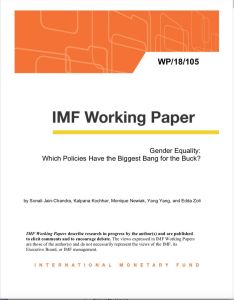Join getAbstract to access the summary!

Join getAbstract to access the summary!
Sonali Jain-Chandra, Kalpana Kochhar, Monique Newiak, Yang Yang and Edda Zoli
Gender Equality
Which Policies Have the Biggest Bang for the Buck?
IMF, 2018
What's inside?
Gender inequality is an accepted fact in many nations, but smart public policy can shrink it.
Recommendation
The critical yet elusive response to the question of how to reduce gender inequality in the labor market has dogged policy makers for decades. This enlightening study from a team of IMF researchers relies on rigorous analytical approaches to determine the most significant factors associated with gender inequality. Their findings point to some promising ideas and potential solutions that may surprise you. getAbstract recommends this study to executives, policy experts and analysts for its insights into gender issues.
Summary
About the Authors
Sonali Jain-Chandra et al. are professionals at the International Monetary Fund.



















Comment on this summary